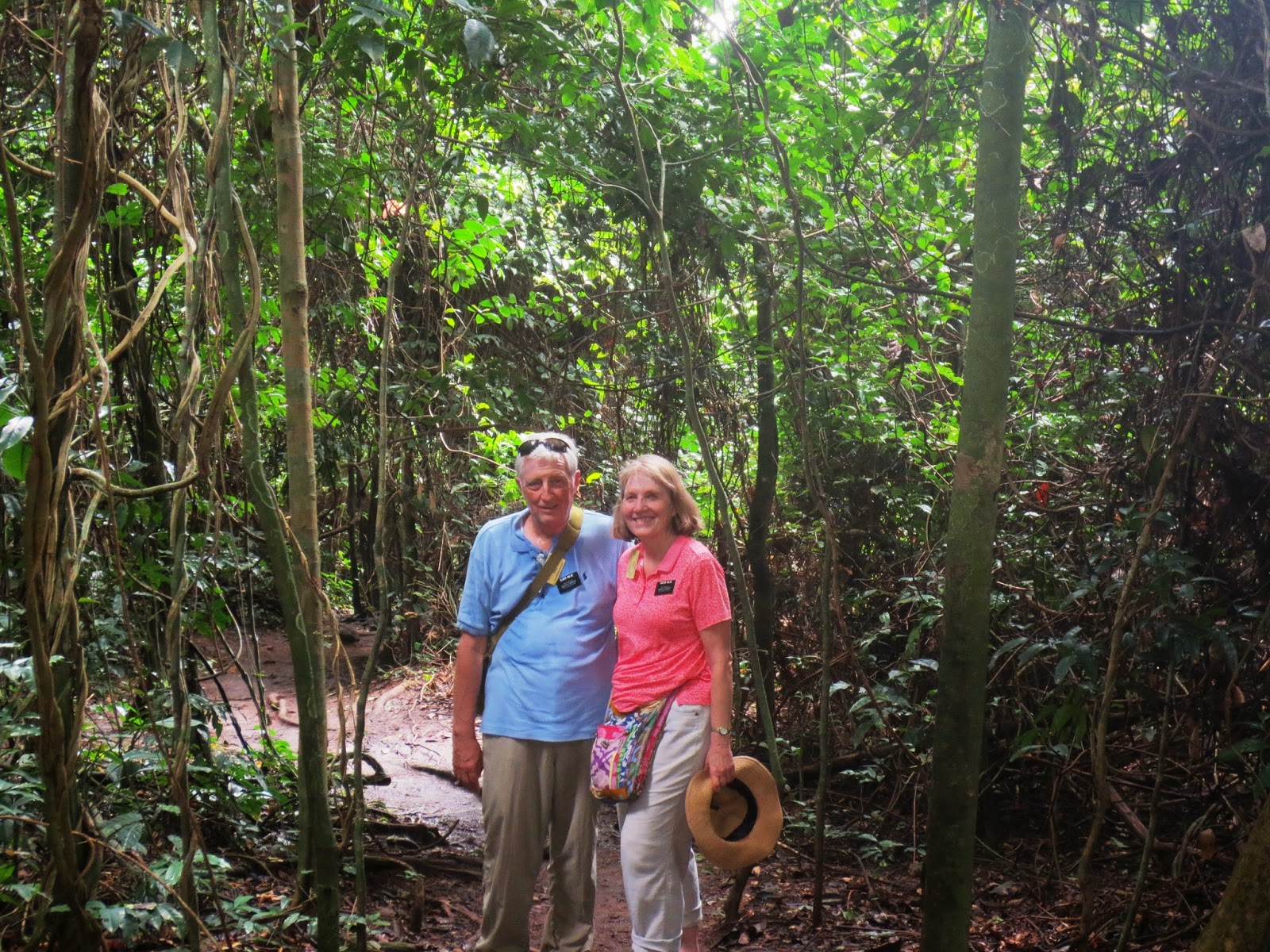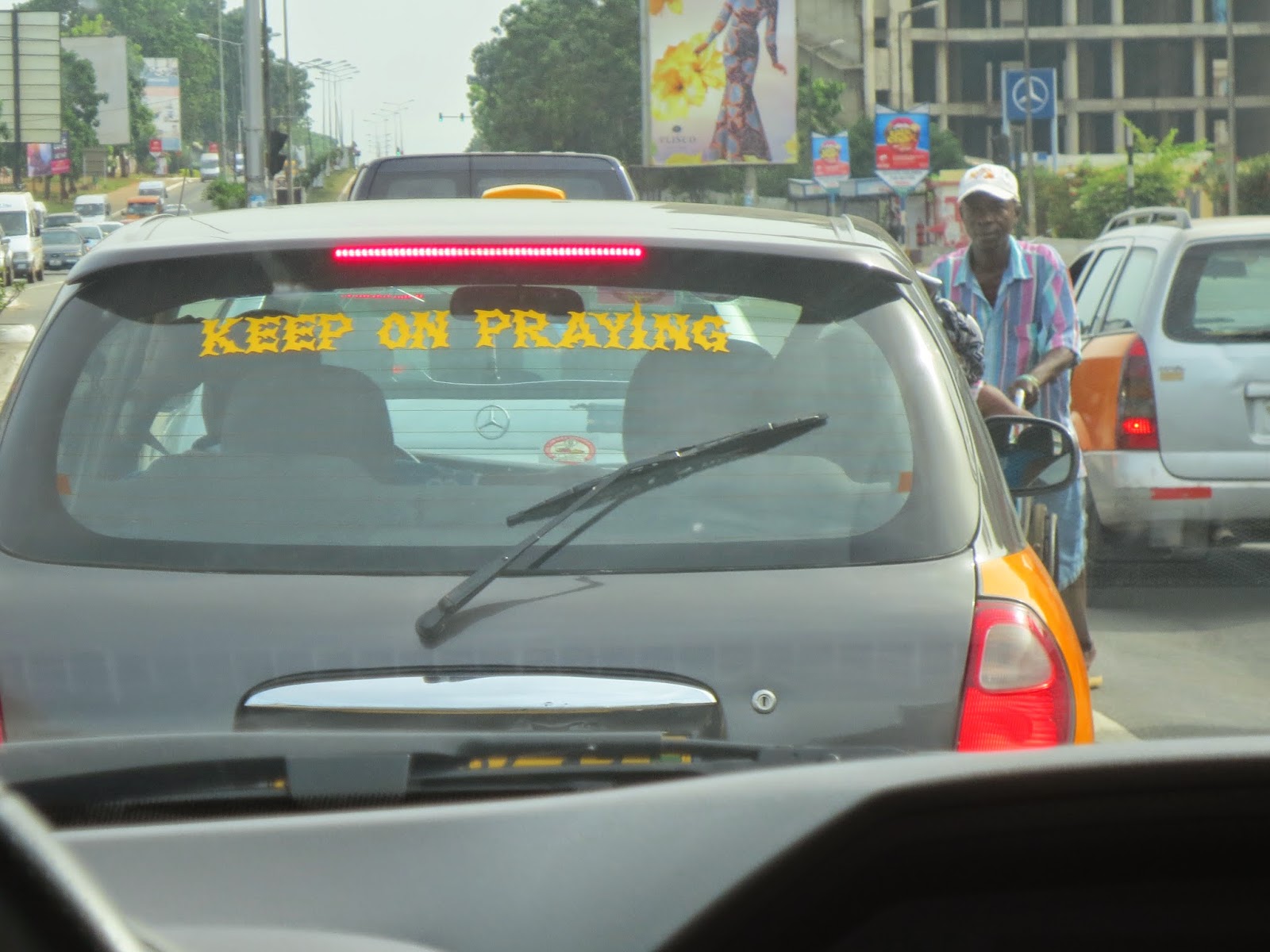In mid-September we went to the Kente cloth festival in “the central region” of Ghana. Most of the festivities were in Kpetoe (pronounced pet-way.) We were there two and a half days though the festival went for most of the week. The part we attended was a true cross cultural experience. Emmanuel Sadahem, a weaver and native of Kpetoe introduced the festival to us. The festival is held annually to celebrate and conserve local traditions.
Kente cloth is a primary cultural artifact of the region. It is woven on looms which are three to four feet wide and the resulting cloth is about four inches wide. Strips are then sewn together to make broader bolts of cloth which are used to make clothing and the Ghana missionary favorite, kente cloth ties.
On Thursday we watched the women taking the water to the wives of the chief. The women of the village walk to the river, about half a mile away, fill a pot or a bottle of water, balance it on their head hawker style, then walk back to the village and pour it into a large pot in front of the chief’s seven wives. You can participate if you are female and if your mother and your grandmother participated.
The gathering place for the water bearers was in the heart of town. We followed the group through the crowd and really enjoyed the locals who enjoyed watching us.
We were the only obrunies (white people) in town. We were a real hit with the kids from about 6-12 who stood on the side of the street and stared at us. Bob would catch them staring and then walk up to them and offer his fist for a “bones” hand shake greeting. Often the whole group would be to shy to respond until one brave sole would offer up his fist and then go from a quizzical stone face to a broad smile at the opportunity of crossing the social boundary. After the first brave sole broke the ice the rest of his friends would gather so they could all give bones to the old white man then walk away with big smiles having proven their manhood.
The next morning we drove down the road a mile or two to watch the march of the villages. Villages from the area, probably 5-10 miles either direction, showed up in tribes with their chiefs. They were dressed in their finest red to commemorate the victories of days past and paraded around the entire arena for all to see. They were usually led by an elder with a fearsome grimace surrounded by his henchmen as they re-enacted some long forgotten of battle. They carried old muskets which they fired filling the air with smoke. After the tribes all arrived, probably 10-12 in all, they paraded once again for everyone to see. Each chief was accompanied by a translator. This went on for several hours. We left slightly before the program was over and missed seeing the slaughter of the goat.
The next day, back in Kptoe at the village field we got to witness the final extravaganza. Once again the Chiefs gathered, participated in mock battle, and the villages all paid homage to the paramount chief. We got to see the dancers from each of the villages show their moves. The dancers were of all ages and genders. The drum beat seemed to be pretty much uniform but one village’s performance was accompanied by a trumpet solo.
In the finale they brought in the champion kente cloth weaver and paraded him through the arena on their shoulders as he was weaving.






































